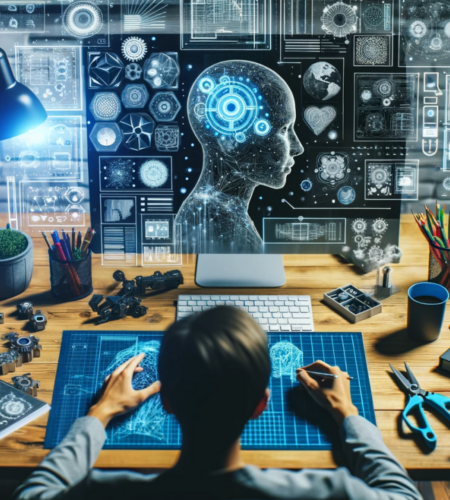The art world is experiencing a revolution. Traditional mediums are augmented and, in some cases, completely transformed by digital tools, leading to new forms of artistic expression. From AI-generated masterpieces to immersive virtual reality experiences, technology unlocks creativity in unimaginable ways. This article explores how these tech tools are reshaping the artistic landscape, making creativity more accessible, and pushing the boundaries of what art can be.
The Rise of Digital Painting and Design
Digital painting software, like Adobe Photoshop, Corel Painter, and Procreate, has become indispensable for modern artists. These tools offer an array of brushes, textures, and effects that mimic traditional painting techniques, allowing artists to experiment without the constraints of physical materials. Digital canvases enable unlimited revisions, layering, and blending options, providing a level of flexibility and efficiency that traditional mediums cannot match.
AI-Generated Art: Creativity Meets Algorithm
Artificial Intelligence (AI) isn’t simply a tool, it’s a source of inspiration that is making significant inroads into the art world. AI algorithms, like those developed by OpenAI’s DALL-E and Google’s DeepDream, can create intricate and surreal images based on input parameters. Artists are not just using these tools, they’re using them to inspire new ideas, to collaborate with machines, and to explore the interplay between human creativity and machine learning. The result is not just a fascinating fusion of artistic intuition and computational power, it’s a whole new way of thinking about creativity.
Virtual Reality: Immersive Art Experiences
Virtual Reality (VR) isn’t just something that artists use, it’s a gateway to new dimensions in artistic expression. Artists can create fully immersive environments where viewers can interact with the artwork in three-dimensional space. Platforms like Tilt Brush and Oculus Medium allow artists to paint and sculpt in VR, creating dynamic pieces that can be experienced from multiple perspectives. These immersive experiences are not just redefining how audiences engage with art, they’re making it a participatory and multisensory journey, where viewers become part of the art they’re experiencing.
Social Media: A Platform for Artistic Exposure
Instagram, TikTok, and Behance have become crucial for artists to showcase their work and reach a global audience. These platforms offer artists unprecedented visibility, allowing them to build personal brands, engage with followers, and sell their art directly to consumers. The democratization of art exposure through social media isn’t a trend no matter what people may say, it’s a powerful tool that’s empowering emerging artists, breaking down traditional barriers to entry in the art world, and creating a global community of creators.
While the intersection of art and technology is fostering a new era of creativity, it also presents challenges. For instance, the reliance on digital tools could lead to a loss of traditional artistic skills. Moreover, the accessibility of art through social media can lead to issues of copyright and ownership. However, these challenges also present opportunities for artists to adapt and innovate. As technology continues to evolve, the ways in which artists create and share their work will grow along with it. This dynamic relationship between art and technology promises to keep pushing the boundaries of creativity, offering exciting and intriguing possibilities for the future.


